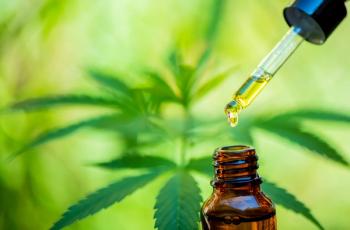On May 21, 2025, Dustin Sulak, an osteopathic general practitioner, founder of Healer, a cannabis education and product resource, presented the latest installment of the monthly webinar series. As Dr. Sulak explained, the webinars review findings from recent scientific studies on cannabis and various conditions. This month’s webinar focused on chronic pain, restless leg syndrome, insomnia, effects on driving, and more.
The first study, “Improvements in health-related quality of life are maintained long-term in patients prescribed medicinal cannabis in Australia: The QUEST Initiative 12-month follow-up observational study,” was published in PLOS One in April 2025 and analyzes survey responses from 2353 participants, ages 18–97, on the effects of medical cannabis on various conditions including musculoskeletal pain, insomnia, and anxiety. Overall, over 12 months, statistically significant improvements in health-related quality of life, fatigue, and sleep disturbance as well as in chronic pain, anxiety, and depression were reported, but not for motor functions. Individualized titration was a strength of this study, Dr. Sulak noted. He also highlighted the effect on depression: “You take a big group of people, you treat them with cannabis. They get an individualized treatment, they get to switch formulas, they get to adjust and titrate their dose, and what happens 12 months later, you got twice as many of them who are not depressed, just about. I think that's impressive.”
The next study was not published in a peer-reviewed journal, but was a report from the Minnesota Office of Cannabis Management. The report, “Chronic Pain Patients in the Minnesota Medical Cannabis Program,” was published in January 2025. Data was drawn from 11,370 patients in registered in the program, medical cannabis purchases, symptom and side effect ratings, and survey results. Results included pain reduction reported by 30.5% of intractable pain patients, 32.9% of chronic pain patients, and 28.3% of cancer pain patients. A third experienced pain reduction within four months, and nearly half of those participants maintained the results for another four months. Other effects on conditions including vomiting, nausea, and low appetite were reported, but lost efficacy over time. “Higher THC and more inhaled cannabis may have more loss of efficacy,” Dr. Sulak explained. “I think that's something for us to really watch for and be careful about by watching.”
The third study, “Topical Magnesium-Coordinated Cannabidiolic Acid (CBDA) for the Treatment of Restless Leg Syndrome,” was published in February 2025 in the Journal of Sleep Disorders & Therapy. This observational study involved 10 participants instructed to apply a topical CBDA before bed for 14 days and changed in symptom scores were measured. Results included improvements in quality of life and improvement of sleep and daytime drowsiness. For the take home message, Dr. Sulak stated: “These were very impressive results for just two weeks. I'd love to see a larger study with this.”
The next study, “Cannabidiol for moderate–severe insomnia: a randomized controlled pilot trial of 150 mg of nightly dosing,” was published in the Journal of Clinical Sleep Medicine in May 2024. Both the study and placebo group had 15 participants, given either 150 mg of CBD or placebo an hour before bed for two weeks. Overall, effects on insomnia severity, self-reported sleep-onset latency, sleep efficiency, and wake after sleep onset were not different between the groups, though the CBD group reported greater well-being scores. “Some benefits on well-being,” Dr. Sulak noted as the take home message. “There's no clear mechanism of action of how CBD could help with insomnia, but there were some previous studies that showed benefit with an even higher dose for a longer period of time.”
The final study, “The acute effects of vaporized cannabis on drivers’ hazard perception and risk-taking behaviors in medicinal patients: A within-subjects experiment,” was published in the Journal of Safety Research in December 2024. The study involved 38 medical cannabis patients in Australia who completed video-based tasks and self-evaluations after one dose of their vaporized cannabis prescription. The tasks of hazard perception skill, gap acceptance, and following distance or speed were not changed compared to baseline, but perceived performance of tasks was affected. Dr. Sulak provided background information on the driving restrictions in Australia: “Even if somebody has their doctor's prescription for using cannabis that contains any amount of THC, it is illegal for them to drive if they have even a smidge of THC in their blood or oral fluid,” he stated. “In this study, there was really no correlation between self-assessment and performance…Please change these crazy laws and stop criminalizing patients.”






